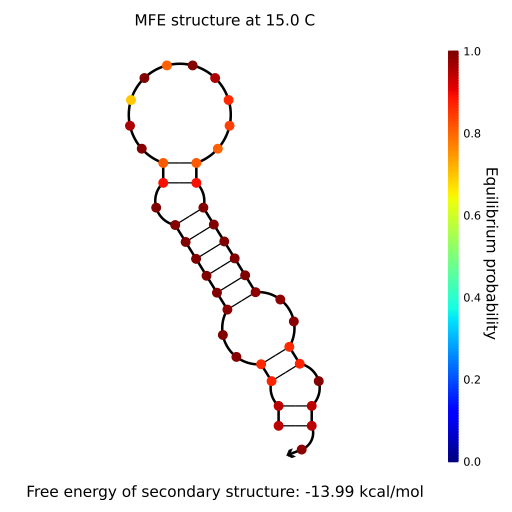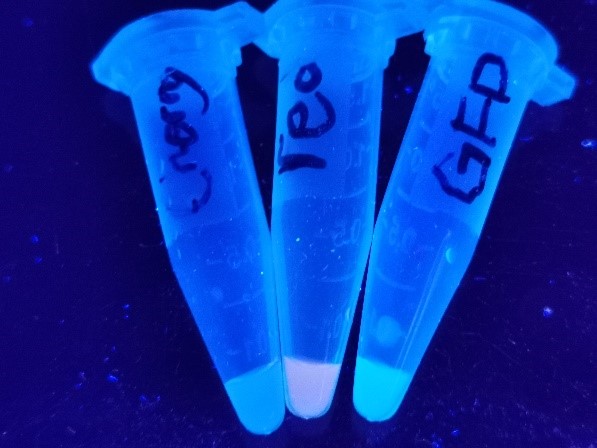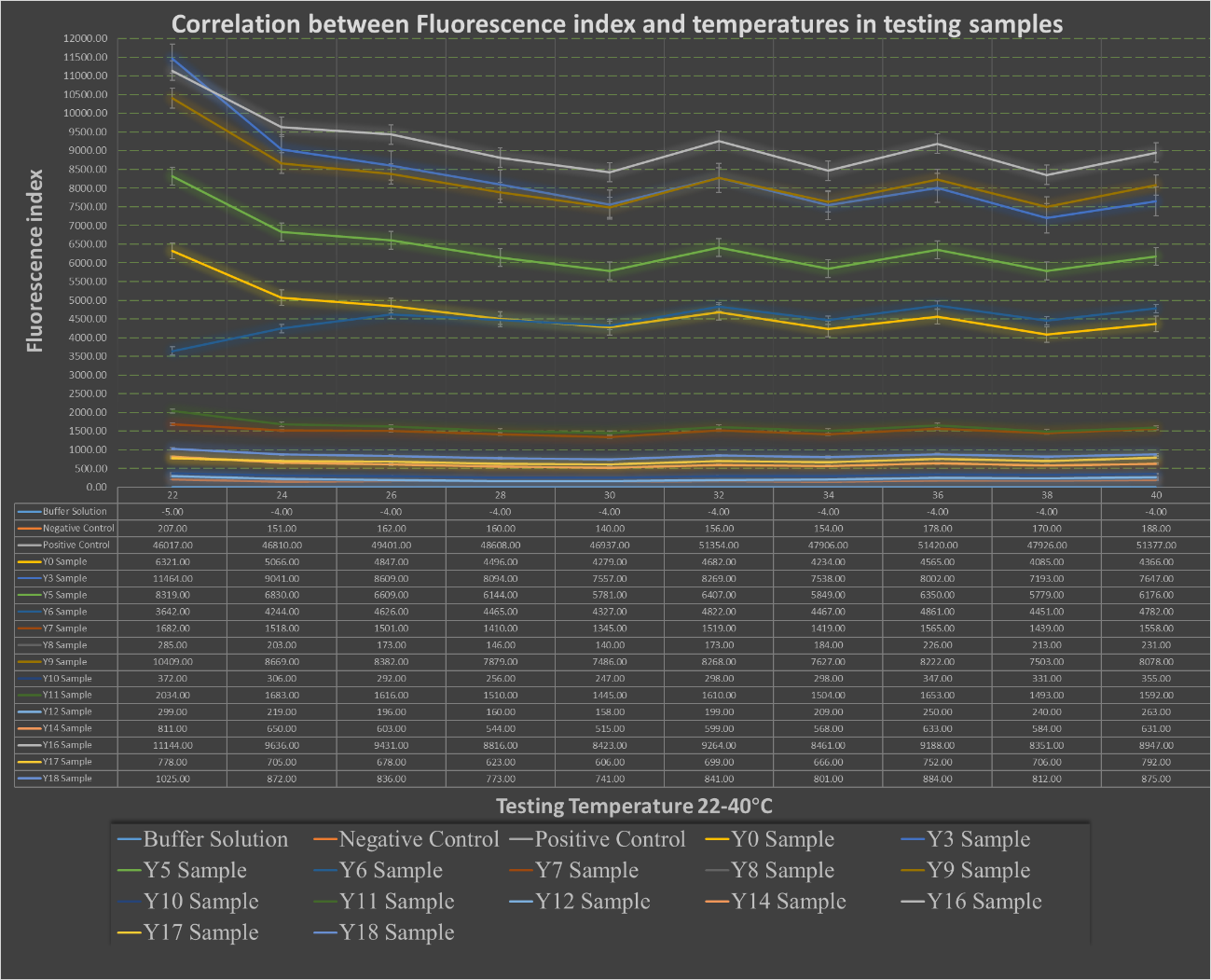Part:BBa_K3135016
y6
Increasing loop size of Y0 by 3b.p
Usage and Biology
BBa_K3135016 Y6
Design
RBS Y6 is a RNA thermometer modified from Y0 by adding three adenine nucleotides to the loop structure. The increase of the loop size has destabilizing effect on the stem-loop structure. We designed Y6 with the aim to decrease the stability of the RNA thermometer and thereby creating a RNA thermometer optimized for a higher inducing temperature than 37 ˚C.
The predicted structure by NUPACK of Y6 is shown in the following figure. Y6 is predicted to have a loop of 10 nucleotides and a stem with an unpaired nucleotide in front of the ribosomal binding site. The melt profile for Y6 has a relatively steep slope from 25 ˚C to 40 ˚C, indicating higher sensitivity to temperature increase in this range.
Method
Y0-Y19
1. Y0-Y19 are 20 samples with different RNA thermometers, and each to them is designed previously. In the next experiment, our team focus on creating T7-Y6-eGFP-ter (and other Y0-Y19 RBS) with these 20 samples with different features.
2. System (to be completed on ice):
3. Placed in a 30 ° C PCR machine for 2-3 hours.
[•Microplate reader: testing RNA thermometer fluorescence]
Temperature setting: 22-40 ° C
Results
In order to test the qualifications of those RNA thermometer samples, we decided to use Microplate reader to exam the degree of fluorescence of each sample. As the data table shows, our team raised 2℃ each hour and recorded the data (degree of fluorescence) changes each time. The first data in the table is buffer, the second one is negative control, the third one is positive control, and the rest are the representative samples that choosing from Y0-Y19.
According to the data, the sample data that having ten times above the negative control is considered effective. During different temperatures, we could see the degree of fluorescence changes in each sample which means one specific temperature actually causes the transcriptions of genes and makes chromoproteins. Therefore, the data of transmittance demonstrates the concentration of those chromoproteins. Most of data that we collected demonstrated the results of experiments clearly.
Sequence and Features
- 10COMPATIBLE WITH RFC[10]
- 12COMPATIBLE WITH RFC[12]
- 21INCOMPATIBLE WITH RFC[21]Illegal BamHI site found at 1
- 23COMPATIBLE WITH RFC[23]
- 25COMPATIBLE WITH RFC[25]
- 1000COMPATIBLE WITH RFC[1000]
| None |





